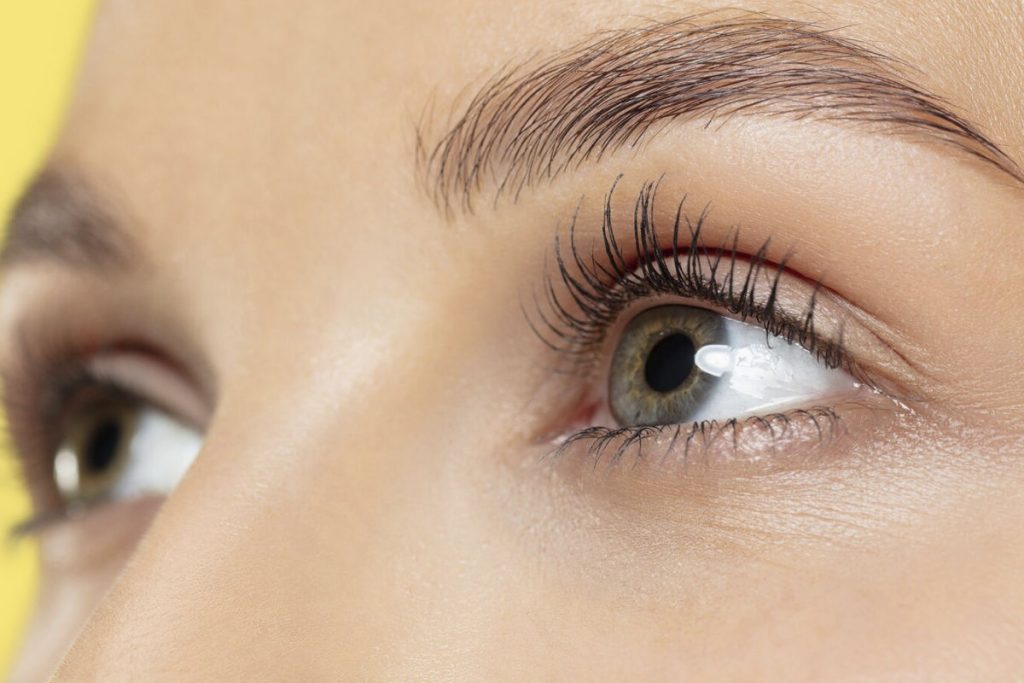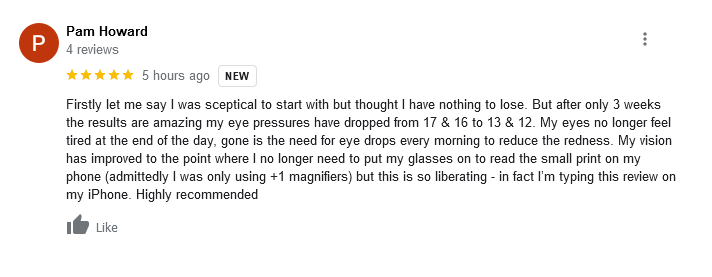
My optometrist said that I have astigmatism. Is it dangerous, and how can I fix it?
Astigmatism is not dangerous. It just means that your vision will be blurry without spectacles or contact lenses.
It also means that you may be more likely to suffer from sore eyes, eye strain and visual fatigue.
The easiest way to ‘fix’ astigmatism is to wear spectacles or contact lenses.
You could also opt for more invasive procedures such as LASIK or clear lens exchange.
If your main issue is eye strain and visual fatigue, then supporting your eye health internally through vision-specific nutrients is vital.
Many patients with astigmatism ask me what the best vision-specific nutrient they should be taking for their tired and sore eyes.
For me, easily the best is the combination of vision-specific nutrients that you get in Nutravision.

Disclaimer: I am part of the team of leading Australian clinicians, scientists and naturopaths that formulated and developed Nutravision Eye Defence+)
So what exactly is astigmatism?
Astigmatism occurs when light rays entering the eye become focused at different distances from the retina.
Effectively, it is a focusing issue, whereby some parts of an image is more out of focus than other parts, thereby affecting your vision.
Astigmatism can occur due to an irregularity of the cornea (front window of the eye) or lens (middle window of the eye) or both. This irregularity causes the light rays in the horizontal and vertical planes to be focused at different locations.
In an eye without astigmatism, the light rays in the horizontal and vertical planes become focused at one single point, giving a crisp and sharp image.
Astigmatism is sometimes inherited, but it often occurs as a normal characteristic of growth. Other causes include:
– Previous eye trauma
– Previous eye surgery, such as corneal transplant and pterygium surgery
– Disease of the cornea, such as keratoconus
– Something pressing on the eyeball, such as an eyelid stye.
Astigmatic errors occur in around 30% of children and adults
Learn more about the natural remedies for astigmatism
How can I test myself for astigmatism?
Most people will have a small degree of astigmatic error, so please do not worry if you find that you have some degree of astigmatism.
There are 2 common self-test methods for astigmatism – the Dial Test and the Line Test. Both are easily done in 3 simple steps.
Dial test

Instructions:
1. Position yourself 3 meters or 10 feet from the dial chart2. Cover each eye at a time
3. Observe the lines with each eye carefully.
All the lines are black in color. You are likely to have some degree of astigmatic error if some lines appear black while others seem gray.
Line test

Instructions:
1. Position yourself 3 meters or 10 feet from the line chart2. Cover each eye at a time
3. Observe the lines with each eye carefully.
All the lines are black in color. You are likely to have some degree of astigmatic error if you do the squares appear gray or not to have the same black color.
Which astigmatism test is better?
The best and most accurate way to test your astigmatism is to have your eyes properly refracted by your eye care professional (either your optometrist or ophthalmologist).
The line and dial tests will tell you whether or not you have astigmatic error. However, it does not tell you how much astigmatic error you may have.
From the refraction, you will obtain 3 numbers: the sphere, the cylinder and the axis. The cylinder is the number that denotes the amount of astigmatic error that you have.
For example, the refraction may read: -0.75 / +1.50 x 90
In this example, the sphere is -0.75, the cylinder is +1.50, and the axis of the cylinder is 90 degrees.
This refraction is incorporated into your spectacle lenses so that you can see crisply again. All you need now is a beautiful pair of frames to complement your new lenses!


